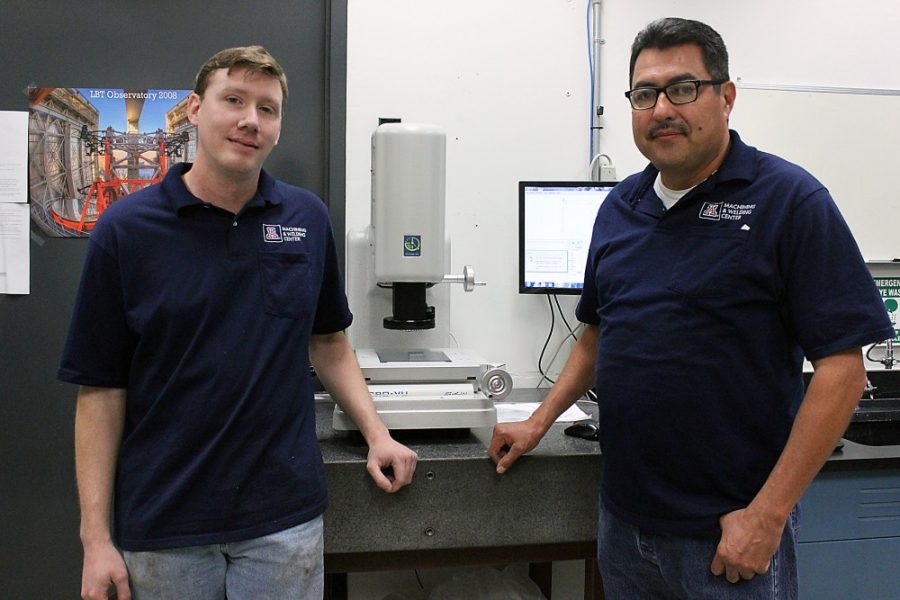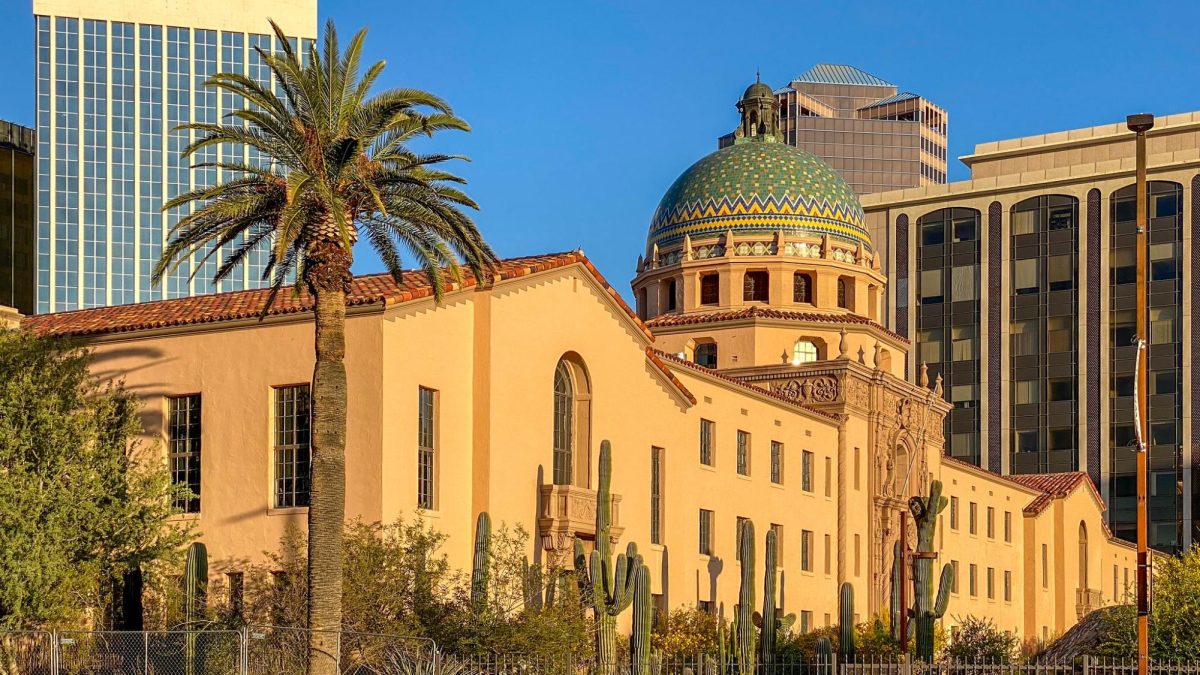The UA Machining and Welding Center is contributing to NASA’s James Webb Space Telescope project by helping rebuild parts for a camera.
The Near Infrared Camera, or NIRCam, which is part of the James Webb Space Telescope Project, is designed to take pictures in the near infrared of very distant galaxies, in addition to helping astronomers study planets around other stars, said Marcia Rieke, a UA professor of astronomy and the NIRCam principal investigator. It is meant to be a replacement for the Hubble Space Telescope and the Spitzer Space Telescope.
“It’s a bigger telescope, so it can see further away, and it works at longer infrared wavelengths,” Rieke said. “It’s trying to be better at finding the most distant galaxies, and it works at wavelengths that are much better for studying other planets.”
When some of the parts were made incorrectly by another company, they had to get redesigned at the last minute, Rieke said.
Lockheed Martin, a company that builds satellites and other space objects, redesigned the parts and started looking for people to rebuild them, which would usually take more than a month.
However, the UA Machining and Welding Center workers told Rieke, “no problem, we’ll get them to you in a hurry.”
The telescope would enable scientists to find galaxies that were the very first to form after the Big Bang and get more detailed information about other planets that have been discovered, according to Rieke. The last step of the project will be putting all the final pieces together, according to Rieke, and then doing a test with the telescope in simulated space conditions.
“It’s a vacuum, really cold, dark, so that we can test it like it will be in space,” Rieke said.
The final telescope launch date is scheduled for 2018. The UA assembled all of the pixels for the camera and the Machining and Welding Center built all of the metal parts for them, Rieke said.
“There were parts that were made out of titanium, parts that were made out of molybdenum,” Rieke said. “Not every machine shop can handle those exotic materials.”
There was an added layer of complication due to the fact that they were building space parts for NASA, said Ryan Willwater, a senior machinist at the center, adding that the parts were of very high value.
“You have to tune out the noise and focus on what you have to do to get it accomplished,” Willwater said.
The group took on the challenge and had to switch gears for the project while still working on other parts, according to Larry Acedo, manager of the UA Machining and Welding Center. This often resulted in 13 to 14-hour work days for the group in order to meet the deadline, he said.
The James Webb Space Telescope Significant Achievement Award, was given to the team of five machinists in August for their work on the NIRCam. The team had no idea they would receive the award, Acedo said.
“They just called us up,” Acedo said, “[and said], ‘Hey, we have an award for you, we want to present it to you guys at the shop.’”
Willwater said he had never heard of the award before, but that it was nice to see the shop get recognized for the work the machinists are putting in.
“We have put a lot of effort into making sure that these parts work, and I think that we all really actually care about it too,” Willwater said.
Acedo said the chemistry between the team is what makes the group work well together. One person can come in and finish another’s work and move it along the line to inspection, he added.
An assurance inspector from NASA’s Goddard Space Flight Center came into the shop to look at the machines and training of the workers and was very impressed, according to Rieke.
“Scientists on campus wanting to do a project can rest assured that they’ve got support right here,” Rieke said. “They came through in a rush and they worked beautifully.”
– Follow Maggie Driver @Maggie_Driver









